Guitars come in endless shapes and sizes to produce diverse tones and playing experiences. But travel-friendly small guitars allow the magic of making music to transcend location, lighting up backcountry campsites and cruise ship lidos alike with their portable voices. In this survey, we’ll explore the storied origins and distinct sounds of over a dozen mini-guitar varieties. From the familiar ukulele to more mysterious models like the Walaycho and cavaquinho, get ready as we unveil what sets each pint-sized plucker apart and the meaning behind their curious names!
The intro aims to quickly preview the focus on small guitars and their unique identities before providing a deeper background. Please let me know if you would like me to modify or expand this opening paragraph further! I’m happy to refine it so it best sets up the article.
Strings and Tuning of Mini Guitar Models
While full-size guitars typically have six strings and standard E-A-D-G-B-E tuning, mini guitars can vary widely when it comes to strings and tuned pitches. Here’s an overview:
The Ever-Present Ukulele
Among the most ubiquitous mini-guitars today, the ukulele has cemented itself as the quintessential portable plucked instrument. But where does its name come from?
Meaning: “Jumping flea” in Hawaiian Origins: 19th century Hawaii, based on smaller cousin instruments brought by Portuguese immigrants. The fast-moving finger techniques inspired the fleet-footed moniker.
True to its name, the ukulele’s compact size, carefree tone, and quick, lively nature seem to zip right off the strings. An icon of Hawaiian music and beyond, the uke’s tiny frame packs some serious punch.
Strings and tuning
- 4 nylon or fluorocarbon strings
- Standard tuning: G-C-E-A
- Soprano scale length: 13”
- Baritone uke scale length: 19”
Popularity Extremely popular instrument for casual hobby playing and as a starter instrument for kids. Commonly used in Hawaiian, reggae, pop covers, and folk music.
True to its name, the ukulele’s compact size, carefree tone, and quick, lively nature seem to zip right off the strings.
Cousins of the Guitar Family
Beyond ukuleles, you’ll encounter other miniature guitars bearing names that indicate their genetic ties to their larger family members.
Mandolin
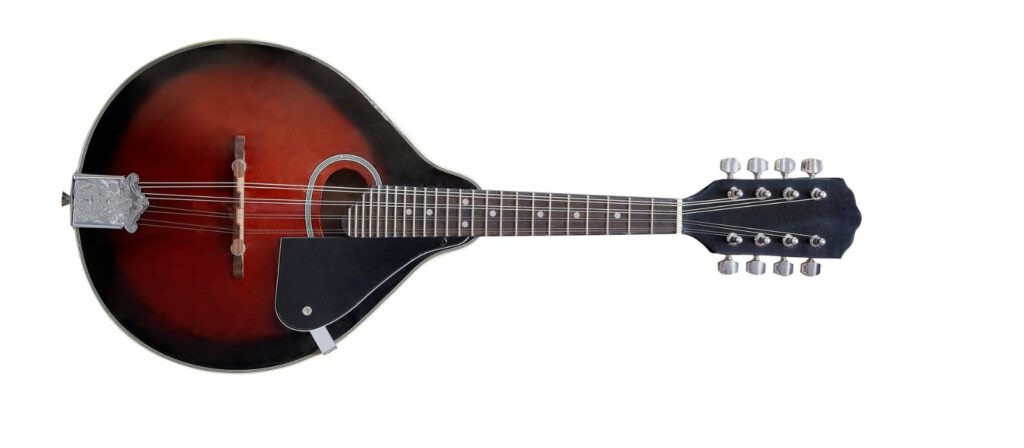
The mandolin traces its ancestry back to 18th-century Italy. With its paired sets of strings and signature teardrop body shape with scroll sides, the mandolin produces an exceptionally bright, percussive sound. The name? Simply the Italian “small mandola,” a predecessor lute instrument.
Strings and tuning
- 4 courses of double metal strings
- Standard tuning: G-D-A-E
- Scale length: 14”
Popularity The popular portable counterpart to the acoustic guitar is used in folk and bluegrass jams. Also widely used in Irish traditional music and increasingly in rock and pop contexts.
Also read: Why guitar is the best instrument?
The 10 Richest Guitarists in the World
Guitalele
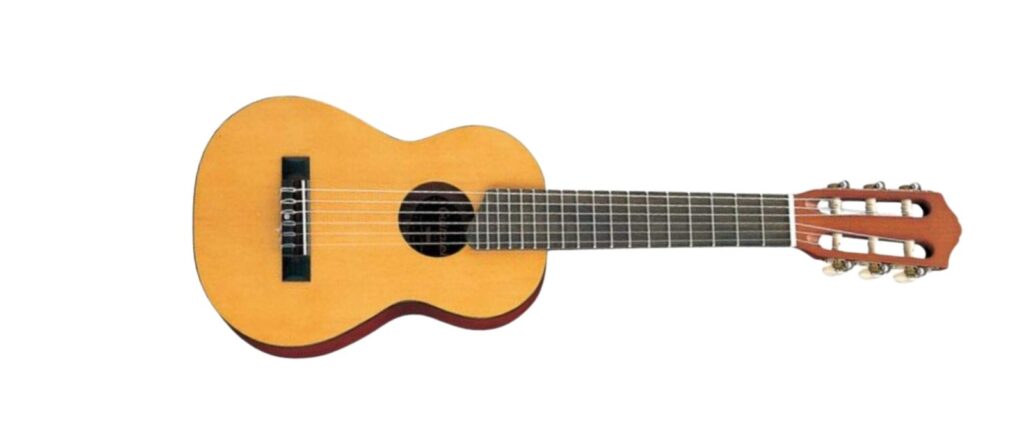
Cleverly combining “guitar” and “ukulele,” the modern **guitalele **marries nylon strings with six steel guitar strings for a beautiful hybrid resonance. Though tuned like a uke, its classic curvy guitar body shape and added string range give it greater tonal flexibility.
Strings and tuning
- 6 nylon and steel strings
- Tuned like a guitar capped at the 5th fret: A-D-G-C-E-A
- Scale length is around 22”
Requinto Guitar
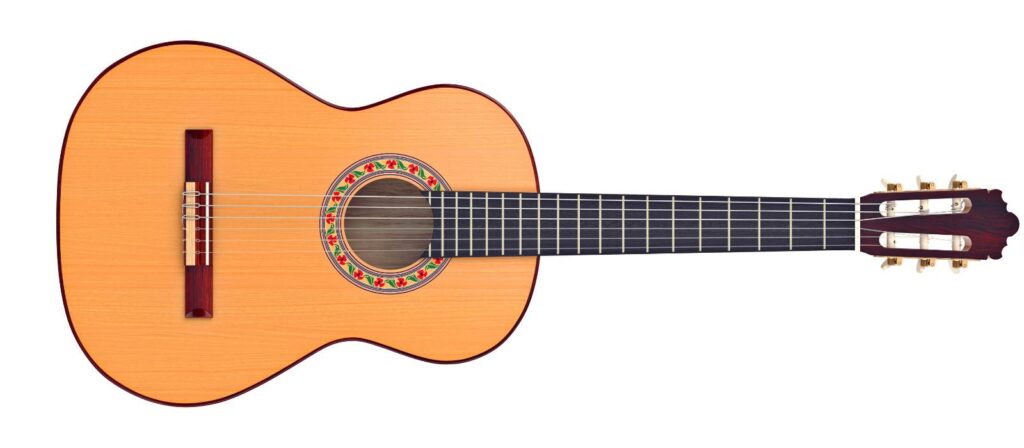
Meaning “smaller” in Spanish, the requinto originated as more portable versions of 5-string Spanish guitars. Modern requintos come in both classical and steel-string forms, projecting a uniquely brisk, articulate voice from their smaller soundbox.
Strings and Tuning
- Steel or nylon strings
- Tuning can vary by exact model but is often a bit brighter than standard guitar tuning.
Latin American Mini Guitar Specialties
Several lesser-known small guitars hail from the south of the border, specially evolved for the tunes and techniques of Latin America.
Charango

Beloved in Bolivia and Peru, the tiny 10-string charango was traditionally made from an armadillo shell. Its sweet, bright chimes-filled dances from the Andes mountains down through Argentine tango halls
Strings and Tuning
- 10 nylon strings in 5 courses
- Open tuning covers octaves in guitar-friendly chord shapes.
Cavaquinho
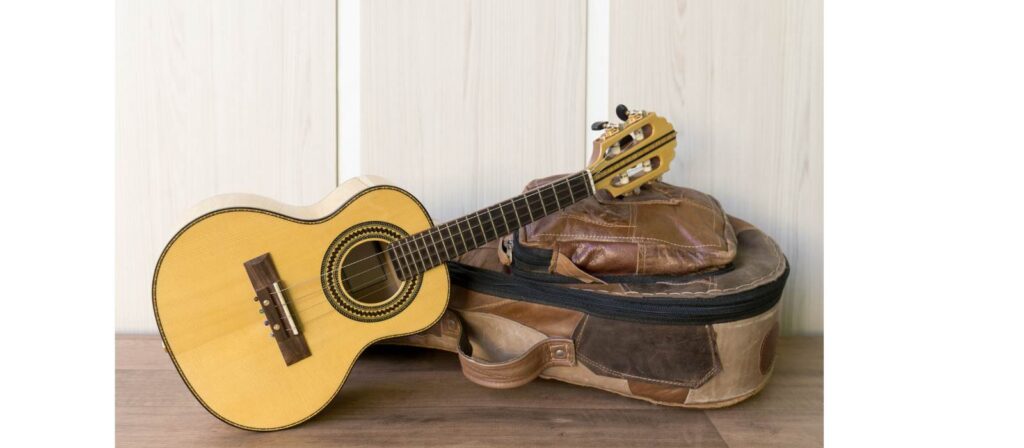
The backbone of the Brazilian samba, the cavaquinho, is Portuguese for “little cavalinho horse.” A bigger four-string version, also known as the Cavaco, also thumps out the driving rhythm of Brazilian beats.
Strings and tuning
- 4 steel strings
- Tuned like ukelele or up 1 whole step: A-D-F#-B
- Scale length is around 22”
Popularity The quintessential chordal accompaniment for Brazilian samba and choro. It gives samba its driving rhythmic pulse and supplies counterpoint for melodic lines.
The backbone of the Brazilian samba, the cavaquinho, is Portuguese for “little cavalinho horse.” A bigger four-string version dubbed the Cavaco also thumps out the driving rhythm of Brazilian beats.
Let me know if this integrated format helps give a more complete picture of each instrument! I’d be glad to make any adjustments needed.
Timple
Hailing from the Canary Islands, the petite wooden “timple carved its niche dancing between tuneful melodies and offbeat strum work. Its appellation simply denotes its status as the tiniest Canarian string folk instrument.
Tahitian Ukulele
True to its name, this small uke sprouted up naturally in 19th-century Tahiti. But its rich Polynesian aesthetic and deeper body shape give it a smooth, baritone uke timbre distinct from its Hawaiian cousin.
Far East Mini Pluckers
Tiny guitars independently took root in Asian cultures as well, bearing singular designs.
Cak and Cuk

Java’s answer to a travel-friendly stringed companion came in the form of the short-necked two-string cak and three-string cuk. Their trademark elongated shape was perfect for accompanying Indonesia’s frenzied gamelan orchestra.
So from the Andes to Southeast Asia, diverse global cultures spawned an array of ingeniously named mini-guitars. Though varied in construction, these miniature pluckers universally allow adventurous guitarists to take distinct regional sounds on the go!
Also read: 9 Best Electric Guitars Under $200 in 2024
Other Uniquely Named Mini Guitar Variants
Beyond global folk instruments, some small guitars sport clever proprietary names that offer a glimpse into their history or character.
Stick Dulcimer

Developed in the late 1990s, this elongated, handheld 4-string hybrid crosses guitar and Appalachian dulcimer tones. Fittingly, “stick” refers to both its very narrow headless handle body and its playing method of hovering over the strings like a percussive drumstick.
Cigar Box Guitar
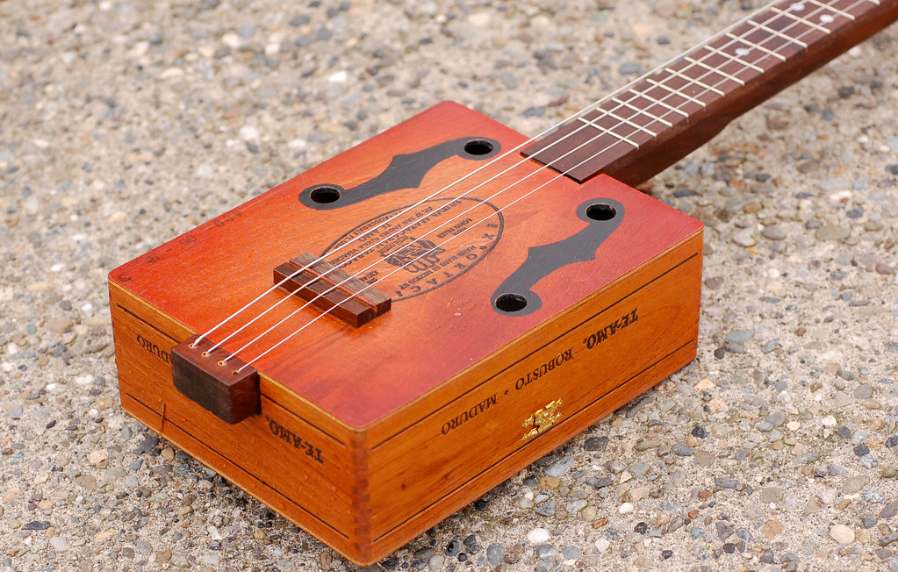
You can guess the primitive recycled materials that went into the homemade originals. But modern cigar box axes retain the gritty DIY ethos and raw, buzzy bluegrass-punk spirit of their makeshift predecessors.
So while fancy terminology isn’t always necessary to convey musical authenticity, the diverse names of many mini guitar breeds reveal the regional tastes that shaped their identities. Whether you pick up a Hawaiian uke or a carnivalesque charango, the instrument’s name tells a rich cultural story before you ever pluck a note!
FAQ’S
What is a small guitar called?
People call the ukulele and mandolin small guitars.
What is a normal-sized guitar?
A standard-sized guitar measures approximately 38–40 inches in length, with a scale length of about 25 ½ inches.
What’s a Mexican guitar called?
A five-stringed Mexican guitar known as a vihuela is used in mariachi bands.
Are there smaller-sized guitars?
Absolutely! Many guitars are smaller than full-size.




